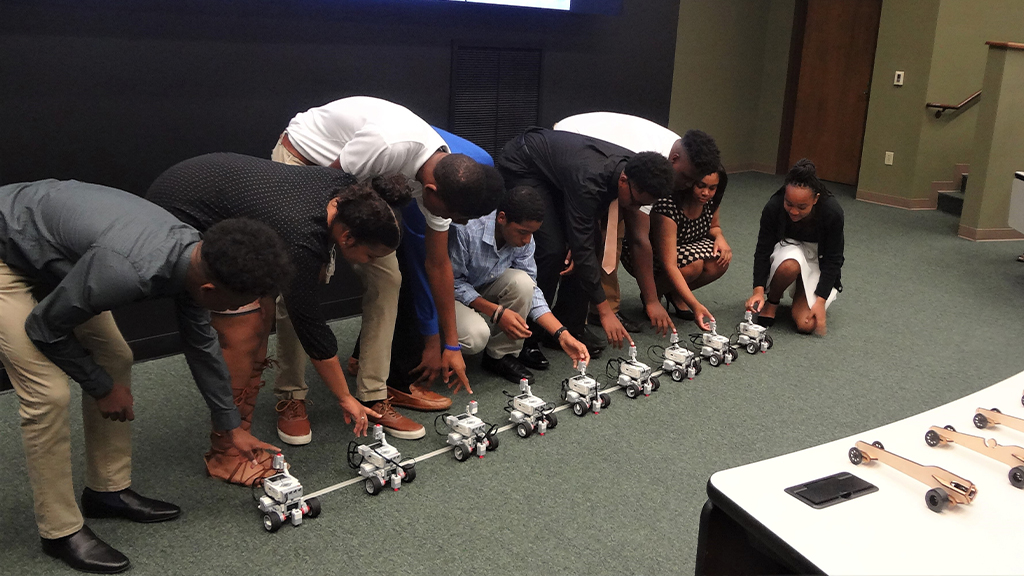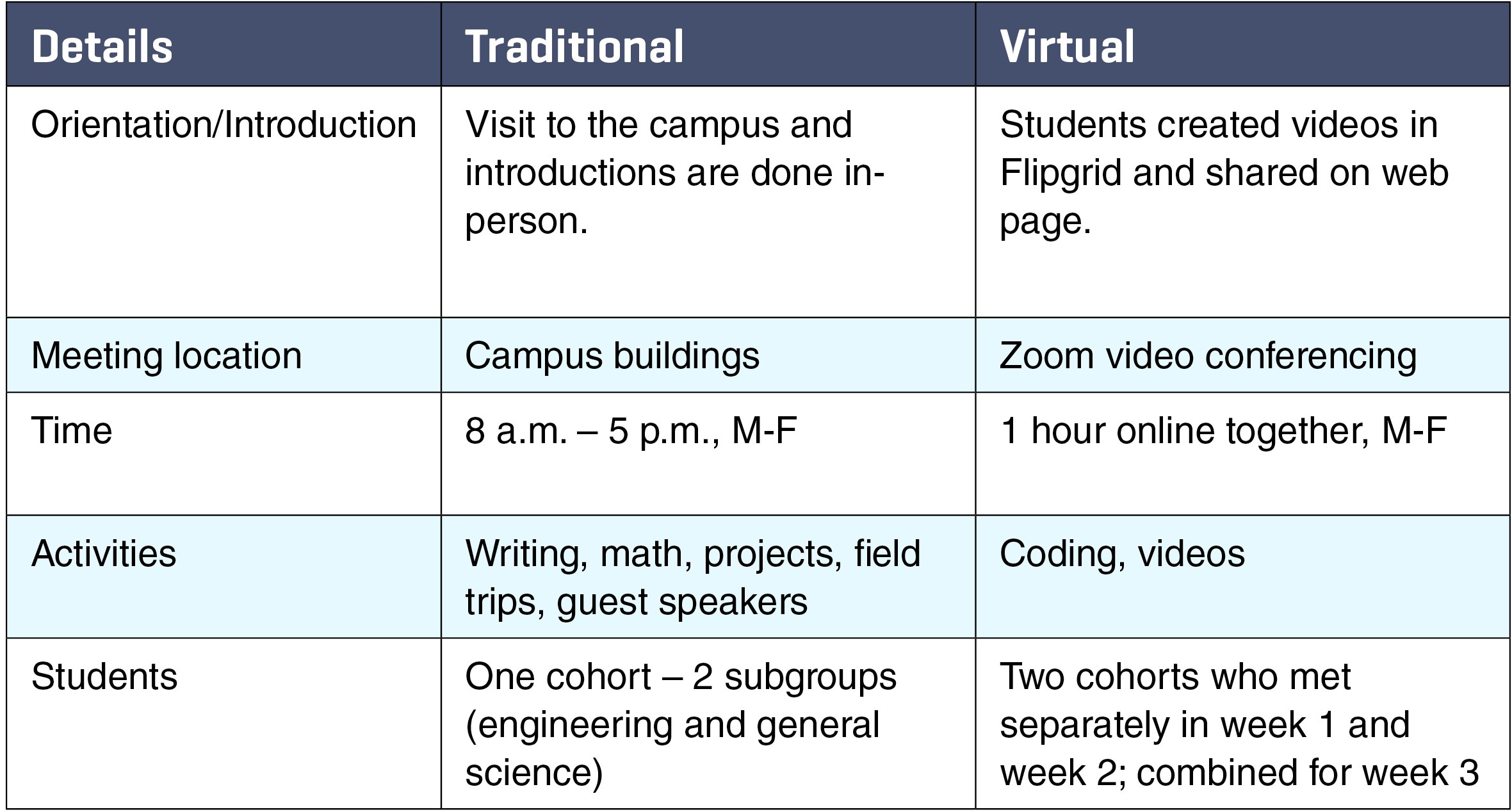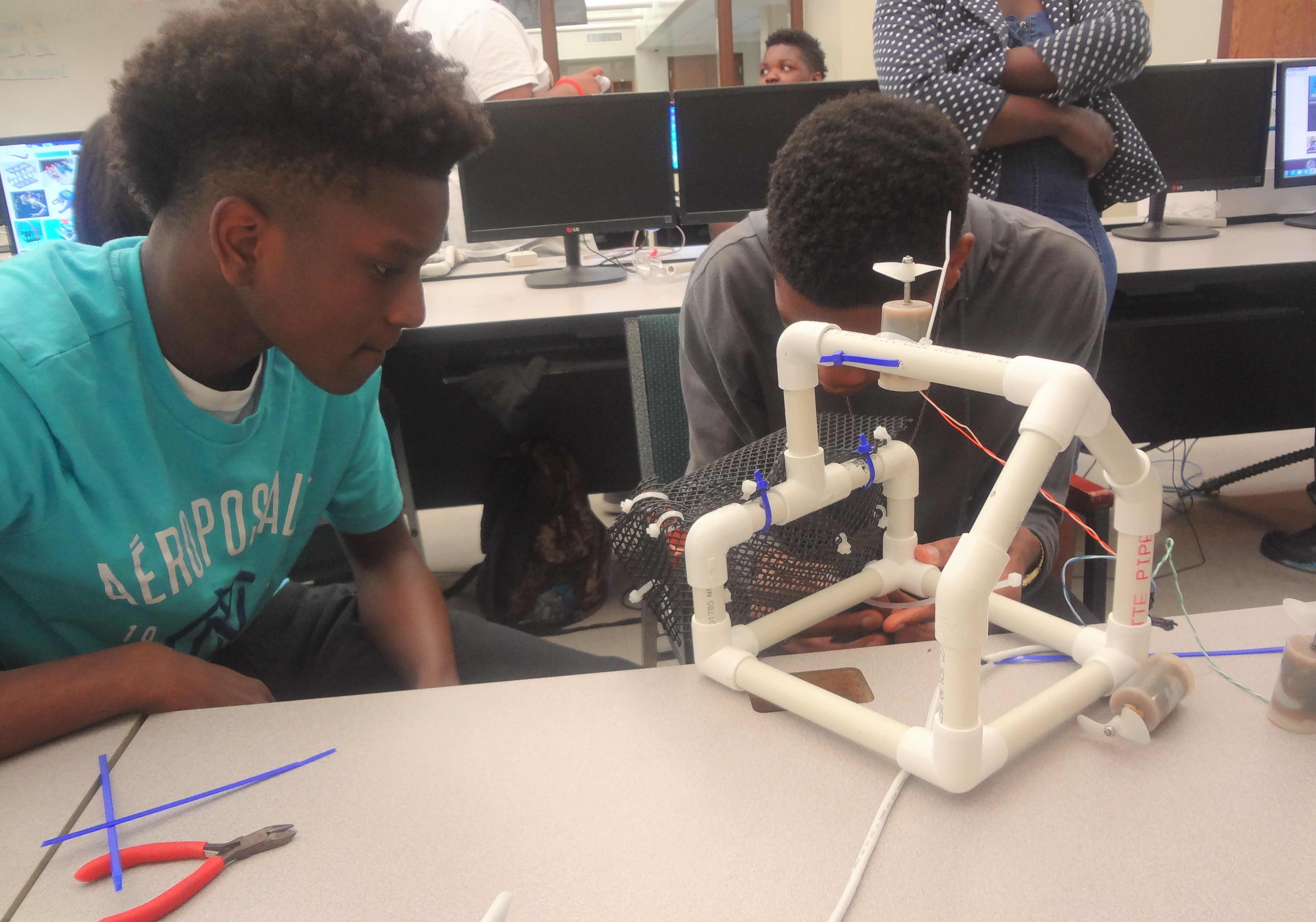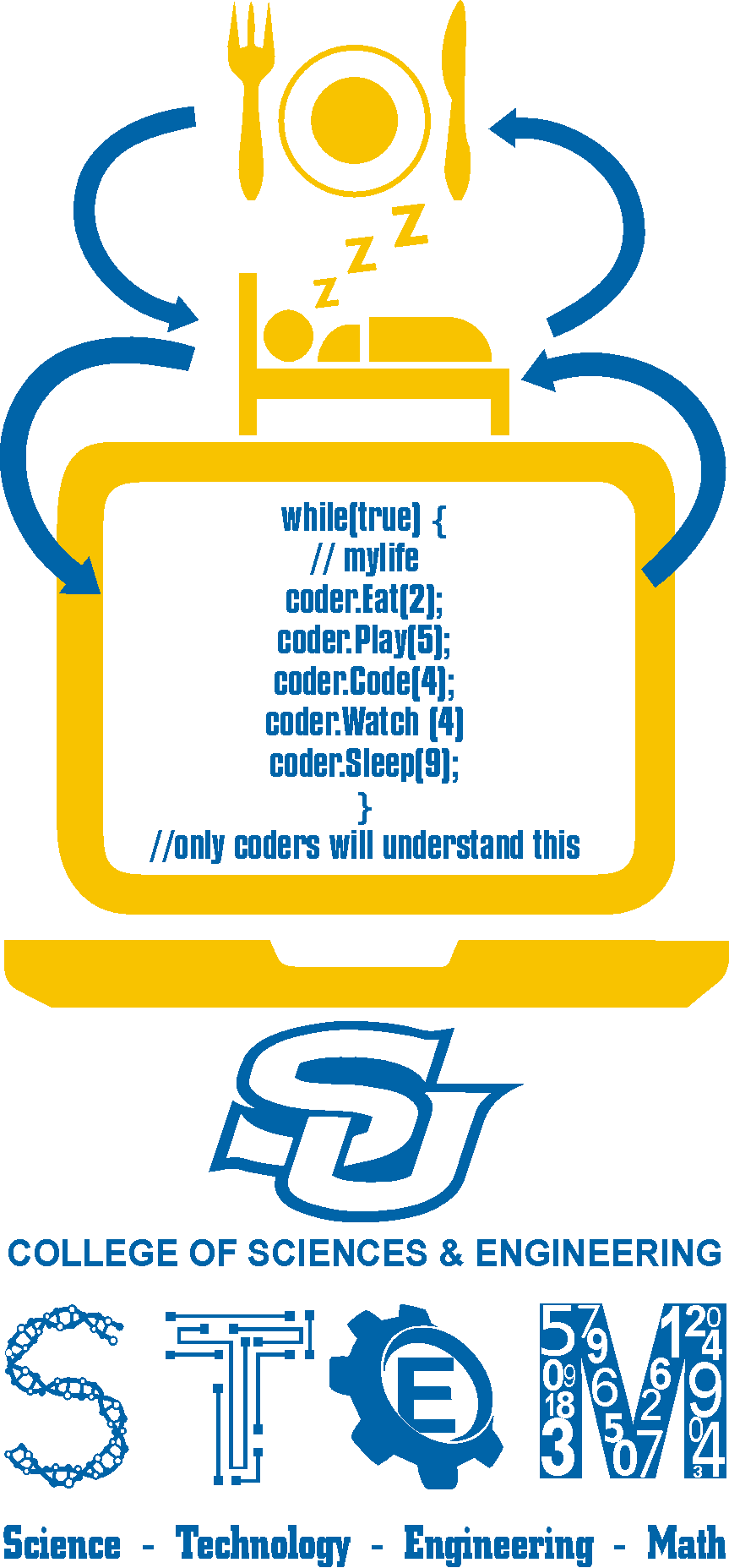STEM Outreach: Traditional vs. Virtual Summer Programming
Connected Science Learning March–April 2021 (Volume 3, Issue 2)
By Francesca M. Mellieon-Williams, Nastassia N. Jones, and Ingrid Cruz

For the last 40 years, the College of Sciences and Engineering at Southern University and A&M College has offered a traditional face-to-face summer STEM outreach program for students in middle school and high school with the goal of exposing them to the countless opportunities in STEM. Southern University and A&M College is one of five institutions that make up the only Historically Black College and University System in the world. Typically, we have about 30 students in the program from the local region, with a few mixed in from more distant locations due to alumni sending their children to their alma mater. Most of the students we serve are underrepresented minorities in STEM fields, so incorporating activities that focus on the development of 21st-century skills for workforce readiness—such as critical thinking, problem solving, and computing—is of utmost importance in preparing the next generation of STEM workers.
Just as planning for Summer 2020 was getting underway, we had to re-evaluate our traditional face-to-face outreach program and brainstorm how we could offer students a similar experience virtually. It was critical that the virtual program continue to engage the community that has trusted us for many years to provide structured, out-of-school STEM experiences for their middle and high school students. As in previous years, the goals of this summer camp were to
- provide an option for parents seeking a low- or no-cost way for their children to participate in our programming,
- increase science literacy of students through exposure to specific science content, and
- achieve an overall improvement in attitudinal measures such as interest in STEM and motivation to pursue STEM careers.
Thus, we decided to develop a virtual coding camp that would allow students the opportunity to enhance their critical-thinking and problem-solving skills learned in the formal education classrooms by engaging in coding.
Traditional Program vs. Virtual Coding Program
A comparison of the traditional vs. virtual coding program is summarized in Table 1. The details of each program are provided in the section below.

Traditional Program
For the traditional program, the student participants arrived on campus daily for three to four weeks to engage in STEM-related activities. This included math courses, technical writing and public speaking, engineering build projects, ACT prep, AutoCAD, career exploration, recreation, and field trips. Aligning with the need to support students in developing coding and computational-thinking skills at earlier grade levels, one of the most notable changes in the last 10 years was the addition of a robotics class. Thematic activities were also included, such as learning the science behind amusement park rides, creating dancing robots synchronized to the latest pop songs, developing a greenhouse with soil moisture testing and watering robots, and using robots to complete simulated space missions.
In the traditional camp environment, there was regular friendly competition for our students in their engineering building projects, robotics, and their final business pitch. Student competition is considered an active learning strategy; it can also be viewed as a form of intrinsic and extrinsic motivation in the learning process (Javadi and Verman 2018). The engineering building projects have included such challenges as an egg drop competition (which egg does not break and which vehicle is the least expensive to manufacture), bridge construction (which bridge can hold the most weight without collapsing), and microphone construction (whose microphone works with the radio). In robotics build challenges students completed specific tasks successfully by a target date. Each year the students enjoyed the challenges, and we had to become more creative with the awards.

Virtual Program
When designing the summer 2020 experience, we knew we did not want to replicate students’ recent experiences with distance learning—being online for eight hours per day. We made our final decision on a virtual coding camp for several reasons including cost, student interest, and current state of the world.
Cost and Platform
Whenever we offer a program, cost is at the top of the list because we must compensate the staff as well as purchase supplies, materials, and equipment while keeping the camp affordable for families. We first considered an Arduino kit, but realized we would have to mail kits to kids and the cost and timing was not feasible. Coding was similar to robotics and kids always seemed to gravitate to the robotics activities. With these considerations in mind, we decided on Code Combat. Code Combat has predeveloped lessons and is designed to be accessible to students with a wide range of prior coding experience. Using Code Combat, students gain experience in Java Programming by designing their own games.
Time Online
Another consideration for our virtual coding design was how families were being impacted by the COVID-19 pandemic. We did not want to require extensive time online from students nor replicate the eight hours on Zoom that some students had experienced with their schools. Thus, we decided on a one-hour per day Zoom meeting that included all participating students and two facilitators who checked in with students, troubleshooting projects and sharing other STEM-related information. Students were expected to complete coding challenges outside of the one-hour sessions.
Cohort Design
The original plan for the virtual program included two cohorts that would have staggered start dates, each lasting for two weeks. During the planning, we thought that managing two cohorts during Week 2 (when they overlapped with 11 a.m. and 1 p.m. time slots) would be no problem. However, with both facilitators still engaged in other responsibilities, this task became quite intense on some days. Therefore, in future programs, adding additional facilitators or having two-week camps without cohorts overlapping would be ideal. Cohort 1 was successful, with students engaged and excited throughout the program. So much so that at the end of week 2 the students did not want to leave, so they continued for a third week, joining Cohort 2. The final schedule of both Cohort 1 and Cohort 2 is shown in Table 2.

Schedule
On the first day, the students were briefly introduced to Code Combat and the facilitators. They then created an introduction video using Flipgrid. Flipgrid is a video tool that allows teachers to post discussion topics/questions for students to respond using video. The students responded to the introduction questions and watched the videos of their peers. During the daily one-hour sessions, we began with questions from the previous day’s coding assignments, showed videos on STEM and coding, and then provided tips for the next coding assignment. Code Combat provides a teacher guide with instructions on how to guide students; however, we also provided students with additional tips from the facilitators. Students were also introduced to many STEM careers and, specifically, coding-related careers through videos.
Coding Challenges
As with our traditional program, we included challenges to keep the students engaged in the virtual program. The coding challenges were also helpful in the virtual environment as a motivation tool for students to complete projects. One of the challenges included completing the assigned task while using the least amount of code. In Cohort 1, a student beat the facilitator number of 35 lines of code with 5 lines of code. Then, students in Cohort 2 asked what the number of lines of code was to beat, and two students tied for the winning challenge; the winners had 3 lines of code. Just as with the traditional camp, we could see the excitement in the faces of the students when they shared their final product and looks of defeat combined with joy when their fellow student did not win the challenge. For the final challenge from Game Development 1, our sales representative joined the Zoom meeting and rated the games. He was even more excited than the students as he played each game and then provided individualized feedback to the students. Students were similarly excited to receive this individualized feedback about their creations. The top three students from each cohort received gift cards with their closing package. The closing package was mailed to each student and included a T-shirt, certificate, and any awards from the competition.
We added a T-shirt design competition to the virtual program because we felt our traditional coding camp shirt design did not represent these students and their experience. After all entries were submitted, the winning design was a compilation of several students’ designs (Figure 1).

Evaluation
In the traditional program, students completed a pretest for each course (English, Math, Robotics) to determine content knowledge and overall STEM interest. These students also completed weekly evaluations of the guest speakers, courses, and field trips. In the virtual program, we also required students to complete a pretest on content knowledge and coding interest. For both programs, students shared in a final survey their overall opinion of the camp, including Likert-scale ratings of various camp components and open-ended questions to share suggestions/recommendations and improvements. We review the survey data weekly and at the end of the program to make improvements (such as modifying or replacing activities, field trips, or guest speakers) for the next offering.
With the evaluation, we asked students a few questions in both the traditional setting and the virtual setting:
- Would you recommend this camp to someone else?
- What suggestions do you have to improve the camp?
- Is there any additional information you would like us to know about your camp experience?
Both traditional and virtual setting responses to question 1 were overwhelming that, yes, they would recommend the camp to others. For question 2, traditional setting suggestions included comments about more recreation time and more hands-on activities. In the virtual camp, students did not have much to say in response to question 2. Most said it was fine—no changes. One student requested more game design activities, and another requested to extend the time of the camp. For question 3, the virtual students were quite vocal. There were quite a few comments about how they enjoyed the experience (e.g., “I liked it. I got to meet coders that I’ll probably be working with in the future.” “For my first camp that is online via zoom it’s pretty good with interactive instructors.” “I liked it a lot and would do it again!”).
Lessons Learned from Traditional and Virtual Programs
Even after facilitating summer programs for more than 10 years, there are still lessons to be learned; this was especially true for the virtual summer camp. The virtual camp provided clear direction on what we needed to change for both environments.
Timing. In the traditional camp, timing was sometimes a challenge for students because their schedules were so busy, as is typical with teenagers. Parents wanted them to participate in our program, and also in other extracurricular school and community offerings. For this reason, we had been considering developing curriculum for two unique and consecutive two-week programs, allowing students to enroll in either one or both options. For the virtual camp, parents selected the best time for their student.
Funding. Funding drives your program. It is also necessary to eliminate financial barriers to participation; fairly compensate staff; and provide amazing, purposeful activities. The challenge of funding is not isolated to traditional, in-person camps; even with virtual camps, you must consider the cost of kits and other tools students may need to participate at home.
Planning and Implementation. Virtual camps are not easier! Virtual camps take just as much time to plan and implement, perhaps even more. It is not as easy to make on-the-go modifications as issues arise. Multiple facilitators may be needed for concurrent sessions as well.
Audience. Virtual delivery can expand your reach. After hosting our first session, we realized that virtual delivery allowed us to reach students who cannot easily come to campus, including students in other states. Virtual programming can also allow students who have other activities and a more limited schedule to participate—a potential solution for our timing challenges mentioned previously.
Student Feedback. Listen to the students as you are planning the next session. They are the ones on the receiving end and will have distinct perspectives compared to those facilitating the content. In the words of the kids, “You need good prizes” and “Food and gift cards always work.” This tip comes from the use of challenges to keep them engaged. Challenges are beneficial in both the traditional and virtual setting.
Information Sharing. Create a website. During the virtual camp, we created a website to post student assignments and the slides used in the sessions; students also shared their games on the website. Moving forward, we will create a website for both the traditional and virtual programs to share student work. The traditional program hosts a closing program each year that allows students to highlight their activities from the program, and with the website we will be able to expand our showcase. Be sure you have parental consent to share any student work and their photos/videos on a public website.
Student Interaction. Unfortunately, with the virtual camp, student-to-student interaction and peer relationships were lacking. During the traditional programs, students collaborate on assignments and projects, enjoy lunch together, and engage in recreation activities together. The structure of the one-hour sessions did not allow for significant development of relationships. Fields (2007) and Gee (2004) refer to these peer relationships and the creation of affinity spaces; the space where students share the same interest and connect through these relationships by participating in the same activities and engaging in conversations related to their interest. Students from both programs stated the importance of these peer relationships and how this made a difference in their summer experience. In our traditional program, we witnessed this taking place by the middle of week one; in some instances, long-term friendships were developed from their summer experience. When we design our next virtual program, we will incorporate time for relationship building and teamwork to allow the students to create these affinity spaces.
Conclusion
In taking inventory of our traditional camp versus our virtual camp, we have several activities we should continue including in both programs as well as some additional activities we will include moving forward. We will be sure to continue our student challenges/competitions in both settings and to include time for peer relationship building in our virtual setting. Although neither of these has been formally assessed, we have anecdotal evidence that the inclusion of both activities positively impacts students’ experiences. Recommendations to future camp administrators are to include pre- and posttests, develop curriculum using active learning strategies, and most importantly, listen to the students in your programs. Their voices are so important to the process and the success of the program. Their constructive feedback in the surveys is what will help you meet their needs. This year, we are not sure yet how we will host our summer 2021 experience, but we will keep in mind our successes and lessons learned from both the traditional program and the virtual program.
Francesca M. Mellieon-Williams (fmellwilliams@gmail.com) is an Associate Professor of Science/Mathematics Education Doctoral Program and Director of Science Summer Institute at Southern University and A&M College in Baton Rouge, Louisiana. Nastassia N. Jones is an Associate Professor of Science/Mathematics Education Doctoral Program at Southern University and A&M College in Baton Rouge, Louisiana. Ingrid J. Cruz is a middle school STEM Integrations teacher at Oxon Hill Middle School in Fort Washington, Maryland, and a STEM Facilitator for the Engineering and Science Summer Institutes at Southern University and A&M College in Baton Rouge, Louisiana.
citation: Mellieon-Williams, F.M., N.N. Jones, and I.J. Cruz. 2021. STEM outreach: Traditional vs. virtual summer programming. Connected Science Learning 3 (2). https://www.nsta.org/connected-science-learning/connected-science-learning-march-april-2021/stem-outreach-traditional-vs
Crosscutting Concepts STEM Teaching Strategies Technology Informal Education


